Notes
James Nachtwey’s 9/11: Eleven Years Later, Like Night and Day
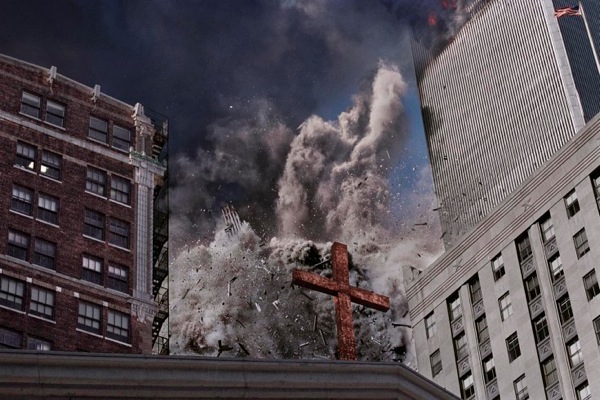
9/11 in 2011
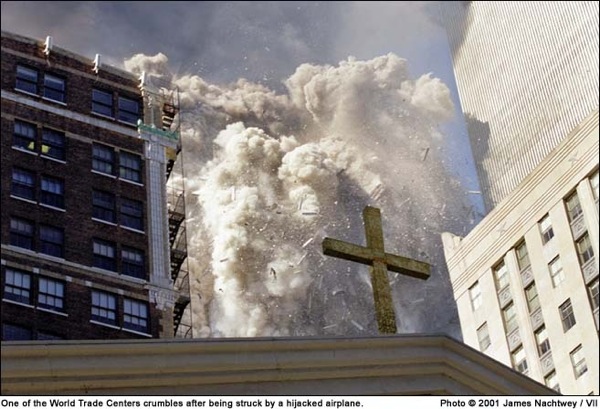
9/11 in 2001
Unfortunately, the Bush administration used the emotional power of the images of 9/11, including mine, to justify and gather support for an ill-conceived invasion of Iraq, a country that had absolutely no connection to the attack on 9/11. So things get manipulated in all kinds of ways.
— James Nachtwey from “Revisiting 9/11: Unpublished Photos by James Nachtwey” 9/7/2011 (TIME)
A couple months ago, a friend sent me a link to a Google+ post by photographer Max Hodges. Published last September 12th, it raised professional and moral questions surrounding an edit of classic 9/11 photos by James Nachtwey published at TIME the day before. These “unpublished” photos (at least two of which seem identical to a pair in this post-cataclysm TIME slideshow) were essentially re-edited versions of photos circulated ten years before.
If I had to boil down Hodges’ post and the accompanying slideshow, the gist was that altering your original photos to this degree would be an out-and-out breach of ethics in a news/reporting context, but for more personal and interpretive purposes, it’s debatable (especially that much later), the role of art coming prominently into play.
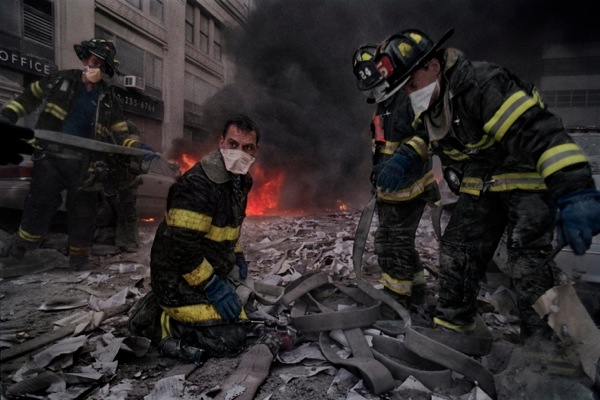
9/11 in 2011
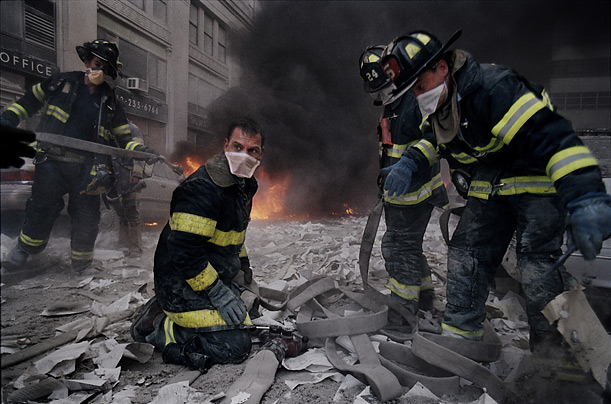
9/11 in 2001
Two comments from the Hodges post were particularly interesting, one more technical involving the inherent subjectivity of any photo. Will Bueche comments:
“Excessive lightening/darkening” may apply here — but which set is wrong? The set from the day, which has blown-out whites in many of the images from being printed too light, or the recent set, which recovers much more detail but might be a bit darker than people’s real-life impression (arguably) may have been? Should we rely on the photographer’s memory of the scenes he photographed? I’d argue yes, we probably should — but we should also know the circumstances of the original images. When he was shooting thousands of pictures on the day of the disaster, how was he transmitting the data as he ran around? Did he have any time to review the images that editors were selecting and have the opportunity to say “hey, those are too bright – the scenes in real life were darker, knock them down a bit”? Without more info there is no way to assume that the original images are more authentic than the ones that have been recently printed with evident care.
Alfie Goodrich, on the other hand, emphasized how creative reality is in the first place (more confounded, it seems, by time and memory):
Ten years after the event, maybe Stockhausen was right when he said: “Well, what happened there is, of course—now all of you must adjust your brains—the biggest work of art there has ever been.”
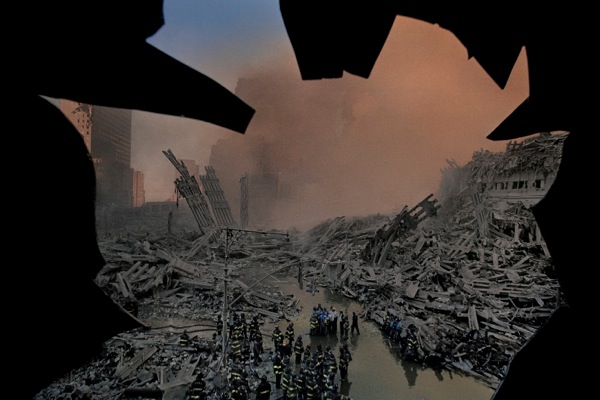
9/11 in 2011
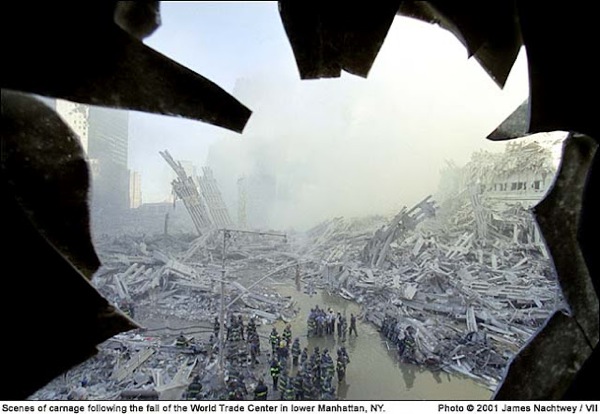
9/11 in 2001
This 9/11 anniversary reminds me how, after going to my tenth college reunion, it was never that special anymore. I have to admit, after the hail storm of imagery we saw last September pounding for weeks leading up to the the tenth anniversary, this week (especially with Obama and Romney “looking forward, not back”) has been a little odd.
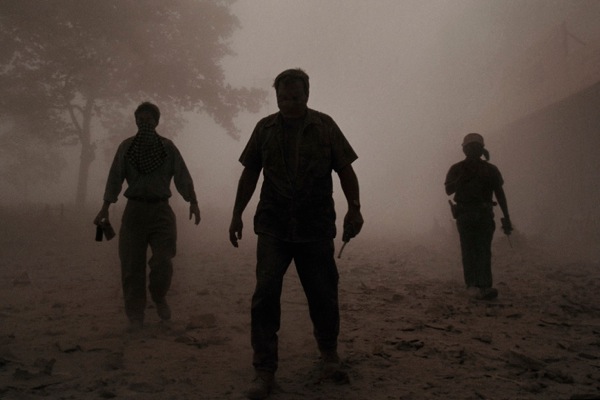
9/11 in 2011
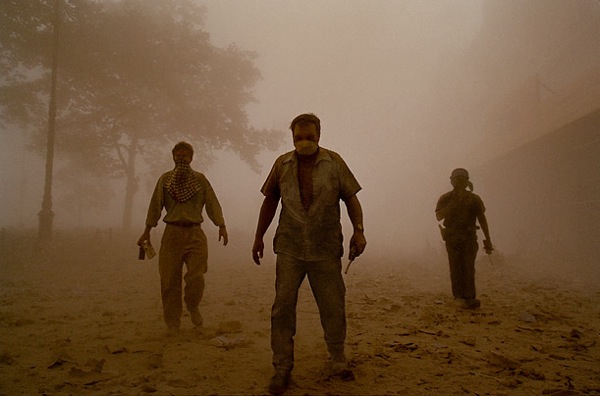
9/11 in 2001
So later today, I’m honored to be joining a graduate seminar at USC’s Institute for Multimedia Literacy to do a deep dive into the optics of 9/11. It’s with that class in mind I put some thought to these pairs of Nachtwey images. Because Bag is about reading images, I’m interested in what you and the students have to say about each pair in particular, and any larger pattern to what Nachtwey’s done. In general, though, I can appreciate Nachtwey’s embellishments as a form of mimicry of the profound mental operations you and I have all performed on these images in our heads.
I get that Old Glory would enter the first picture to engage in a dialogue with the cross (“flag-flation” being a hallmark of the “war on terror” and what many saw as a war on Islam). It makes sense to me also the picture got darker (even if the original was too light in the first place); and that the debris would have to be more thoroughly parsed.
I can understand that the fire behind the fireman on his knees would grow more intense over time.
It’s not a surprise to me that the scene through the shattered window would not remain monochromatic, the rose colored plumage lending desperately needed affect allowing our memories to understand the unfathomable scene as one straight out of the underworld.
Regarding the last set, that’s a real flight, isn’t it? I could certainly use your help on this one. Is it possible that actually surviving that day didn’t necessarily save America from becoming a shadow of its former self?
(photos: James Nachtwey, 2001 and 2011)
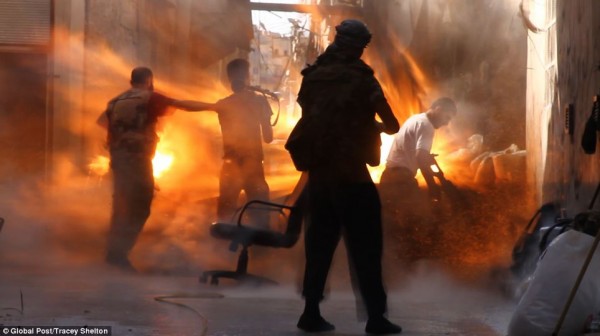
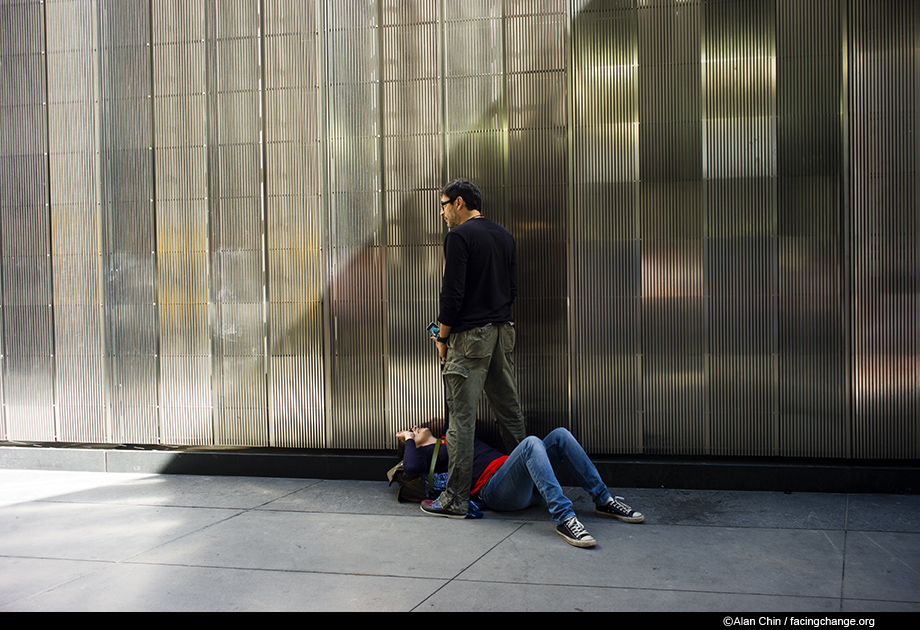
Reactions
Comments Powered by Disqus